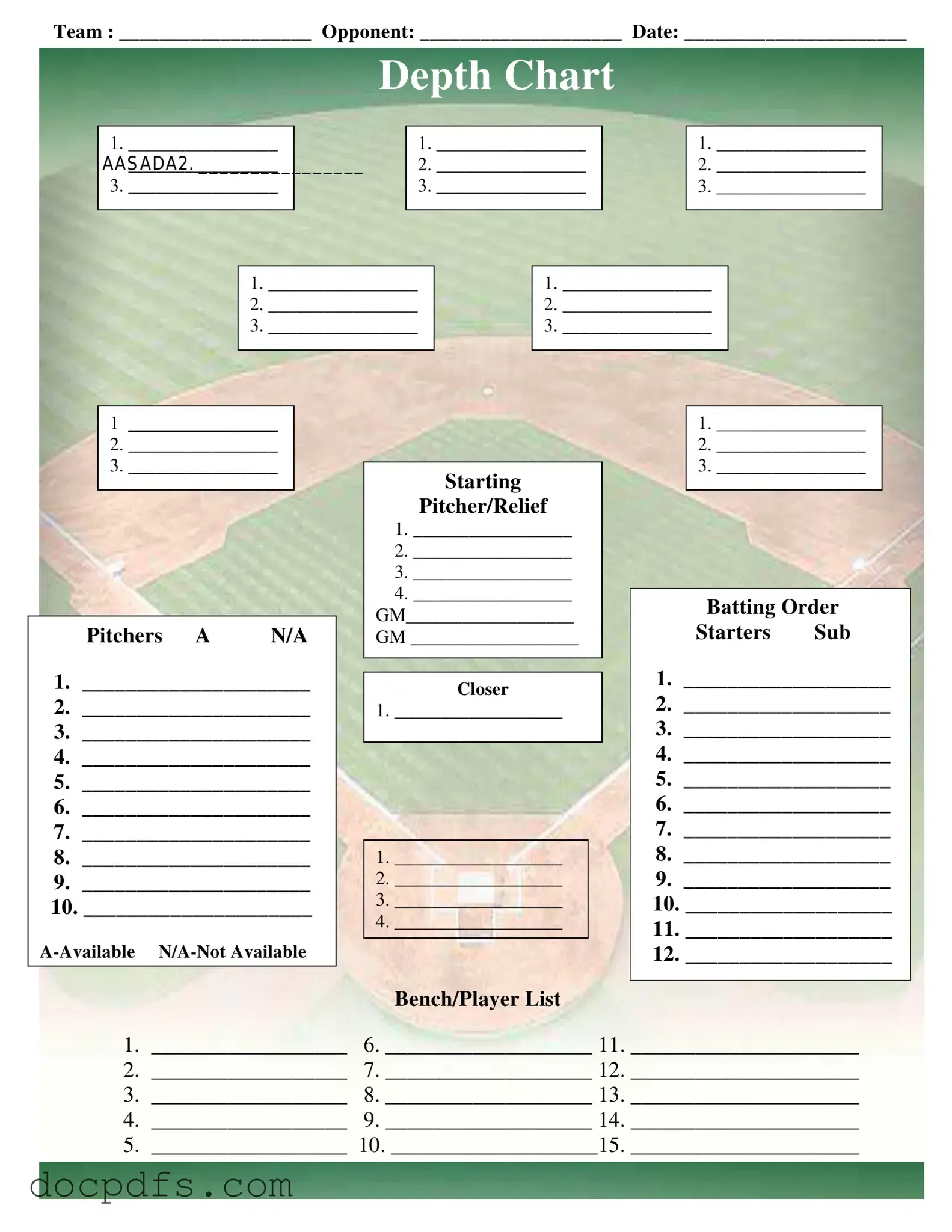The Baseball Field Lineup form serves as a structured way for coaches and team managers to organize player information for a game. It includes sections for listing the team, opponent, date, batting order, depth chart, and pitching assignments. This form ensures that everyone involved in the game is on the same page regarding player positions and availability, which is crucial for effective team strategy.
How do I fill out the Batting Order section?
To complete the Batting Order section, start by listing your starting players in the order they will bat. You will see spaces for up to twelve players. Each player's name should be written in the designated space, starting with the leadoff hitter, followed by the second, third, and so on. If you have substitute players, they can be listed below the starters. This organization helps the team prepare for the game and allows for quick reference during play.
The Depth Chart section requires you to list players based on their positions and roles. You can categorize players into starters and subs. For each position, you will need to indicate who will be starting and who will serve as substitutes. This helps coaches make informed decisions about player rotations and substitutions during the game.
What should I include in the Pitchers section?
In the Pitchers section, you will need to list all available pitchers along with their roles, such as starting pitcher, relief pitcher, or closer. You can indicate availability by writing "A" for available or "N/A" for not available next to each name. This section is vital for planning pitching strategies and ensuring that the team has enough arms available throughout the game.
Why is it important to note player availability?
Noting player availability is crucial because it helps coaches make strategic decisions based on who is ready to play. If a player is marked as "N/A," it signals that they cannot participate, which affects the lineup and game strategy. Accurate information about player availability ensures that the team is prepared and can adapt to any last-minute changes.
Can I make changes to the lineup after it is submitted?
While the lineup can be adjusted, it is important to communicate any changes clearly to all team members. Coaches often have the authority to make last-minute adjustments based on player performance or unforeseen circumstances. However, any changes should be documented to maintain clarity and ensure that everyone is informed about the current lineup.
